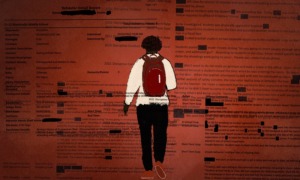I was two years old when the Supreme Court’s Brown v. Board of Education decision came down in 1954. My public education experience turned out quite differently than it would have without this landmark ruling. But it has taken some reflection and research to figure out the difference it made to me and other African-American youth in the nation’s capital.
I often look for opportunities to tell people that I received an excellent education from the Washington, D.C., public schools. I have long known that my years in the city’s schools contrast sharply with the experiences of most students in the system today.
What I didn’t know until recently was that they were also an anomaly in their own time.
In 1954, the Bolling v. Sharpe Supreme Court decision desegregated Washington’s public schools. It turns out that I owe my top-notch education to an innovative (and severe) ability-based group tracking system that was put in place a year later. By 1959, the board of education had approved this system for elementary, junior and senior high schools. I was entering third grade.
I was in the first “experimental” class of gifted students who were pulled from their neighborhood schools into a special program. I was with the same teacher and students, all black, from fourth through sixth grades. I traveled an hour to attend junior high, with a majority-black student body that was tracked so tightly that students were shifted between Honors 1 and Honors 2 tracks based on mid-year test scores.
My high school was an equal opportunity learning ground. I learned Latin, took advanced physics, did literary analyses and composed symphonies. I had teachers who were what they taught: artists, playwrights and activists. I had classmates who lived in the projects and classmates whose parents were senators and bankers. My four best friends were black, white, Chinese and Indian. Every opportunity I could think of was provided at school. My days frequently went from 6 to 6.
My public school education prepared me well. I stunned an affirmative action recruiter who was in town helping black students get college scholarships. When he asked for my SAT scores, I said , “730. …” He said, “We can work with that.” I said, “That’s just what I scored on the math section.” I was well-prepared academically and socially, and did well at Oberlin College in Ohio.
Little did I know then that not all Washington students had the same experience. In 1966, at the beginning of my freshman year in high school, Columbia University Teachers College began a comprehensive 15-month assessment of programs and practices to improve the city’s system. That study, headed by Harry Passow, became the basis for a new lawsuit, Hobson v. Hansen, which resulted in the abolition of the tracking system in June 1967. In his decision, U.S. Court of Appeals Judge Skelly Wright held that “ability grouping as presently practiced in the District of Columbia school system is a denial of equal opportunity to the poor and a majority of the Negroes attending school in the nation’s capital.”
It was sobering to learn that the system that served me so well was denied to others. It was equally unnerving to think that, as a teen, my social justice antennae were so out of whack. I found my senior yearbook in the attic and read every entry. Almost every student was a member of a club or a team, usually more than one. Almost every picture was integrated. The system was not able to replicate this picture across the city, but the fact that it was done at all is worth noting.
Fifty years after Brown, urban school districts struggle to find ways to offer an “equal” education to student bodies that are predominantly poor and minority. And suburban and mid-sized districts are challenged with educating student bodies that are increasingly diverse racially and socioeconomically, but which may be more socially segregated than in the recent past.
The lasting effects of my high school experience leave me concerned about the resegregation of schools, both urban and suburban. My education was “good” because I left high school academically, emotionally and socially prepared for life in a multicultural society. I can’t believe that is any less important now than it was 35 years ago. We need to close the achievement gap. But we also need to close the acceptance gap.
Karen Pittman is executive director of the Forum for Youth Investment. A longer version of this column and links to related readings are available at www.forumforyouthinvestment.org.
























